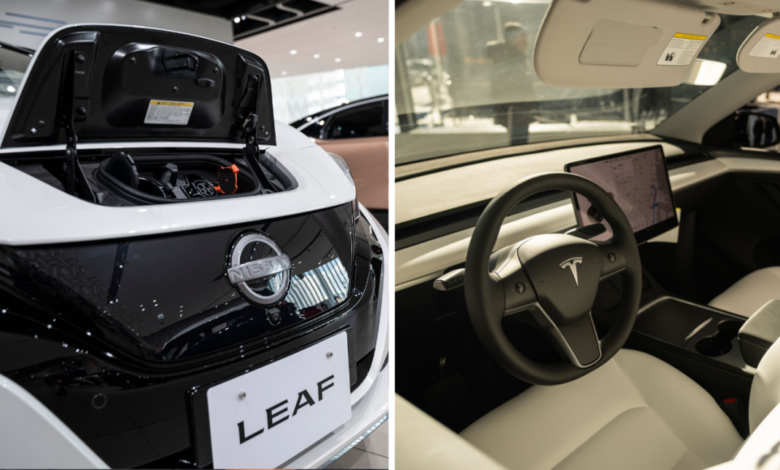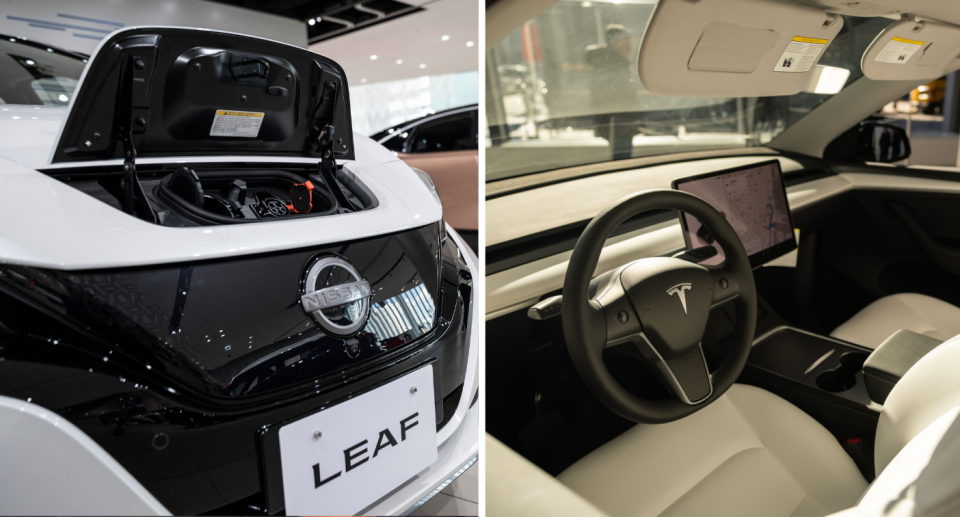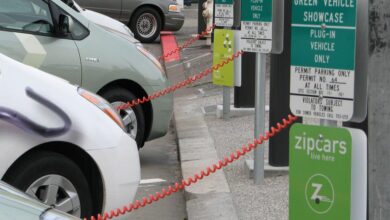EV prices in Australia drop $20,000 ‘almost overnight’ as expert forecasts further doom

The price of some electric vehicles (EVs) in Australia has plunged by as much as $20,000 “almost overnight” as increased competition sees manufacturers fight for every buyer. With government initiatives and warnings over the effects of climate change, EVs have never been more popular.
Purchases more than doubled in 2023 compared to 2022, which continued the trend of sales doubling year-on-year in Australia since 2020. Despite increased demand, car expert Paul Maric told Yahoo Finance prices might not have bottomed out just yet.
“I think it could go further,” he said.

Do you have a story? Email stew.perrie@yahooinc.com
Electric vehicle price tags vary wildly depending on the brand you choose. At one end of the scale, you have the $35,990 GWM Ora Standard, and on the other end, you have the Porsche Taycan Turbo S, which will set you back $345,800.
But some of the cars in the middle of the pack have had “unheard of” price adjustments.
RELATED
The Nissan Leaf went from $50,990 to $39,990, the Polestar 2 2024 Long Range Single Motor fell from $71,400 to $58,990, and the Tesla Model Y dropped from $72,000 to $55,000.
Polestar appears to be the most affected by price drops, with four out of its eight cars available in Australia falling between $10,000 and $15,000, according to Gizmodo.
What’s causing all these EV manufacturers to slash their prices?
Maric told Yahoo Finance that increased competition amongst manufacturers has been driving the price war.
“It’s all been spurred on by Chinese brands who have started bringing in much more affordable electric vehicles to what we’re used to,” he said.
“And typically what happens with volume brands is they don’t really adjust their pricing after it’s set. But we’ve seen brands like Peugeot take like $20,000 out of some of their electric cars, which is unheard of and it also gives you an idea of how much margin they actually had built into them.
“But it’s Tesla that’s probably been the most surprising. To have your key volume player in a segment … take the Model Y for example, it peaked at $72,000, it’s now $55,000. To take that much money out is quite remarkable to see.”
Maric explained how there are boatloads of Teslas arriving in Australia at the moment with no buyers and “the only way they can get rid of them is by dropping the prices”.
“You’re talking about a car that somehow has lost almost $20,000 overnight or over a period of several months for no reason at all other than to sell more stock,” he said.
Should you buy an EV now or wait for another potential price drop?
The CarExpert.com founder shared it could be tempting for Aussies to wait to see if they can get a better deal as this price war continues.
But he said it’s a bit of a gamble and you’ll have to be content with whatever choice you make.
“Maybe now it’s the best time to go and get one because they are pretty cheap for what they are,” he explained to Yahoo Finance.
“You want to be comfortable knowing that at the end of your purchase period or at the end of your lease, that you are able to take a hit on the car and don’t expect to get what you paid for [it].”
The second-hand EV market can be brutal: ‘It’s a firesale’
Maric said EV owners should upgrade their vehicles every two to three years to capitalise on new car and battery warranties, as well as upgraded technology.
This trend has seen second-hand electric vehicles sell for just a fraction of their purchase price. Depreciation happens on almost all cars when they drive off the lot, but Maric said EVs are particularly hurt by this.
Sales data from 2023 for regular used cars show they lost 14.1 per cent of their value when sold between two to four years after their manufacture date. For EVs, that depreciation is 42.4 per cent for the same period.
“The reason behind that is now being driven by people who paid top dollar for their cars trying to get out of them as quickly as they can,” he revealed.
“It’s basically a firesale. They want to sell their car first so they’re not left holding this expensive asset they can’t get rid of.
“And we’re going to see more and more of that with people that have taken out three or four-year leases on these Tesla vehicles that came out around the time the government started announcing all these cost benefits for employees.”
Get the latest Yahoo Finance news – follow us on Facebook, LinkedIn and Instagram.



